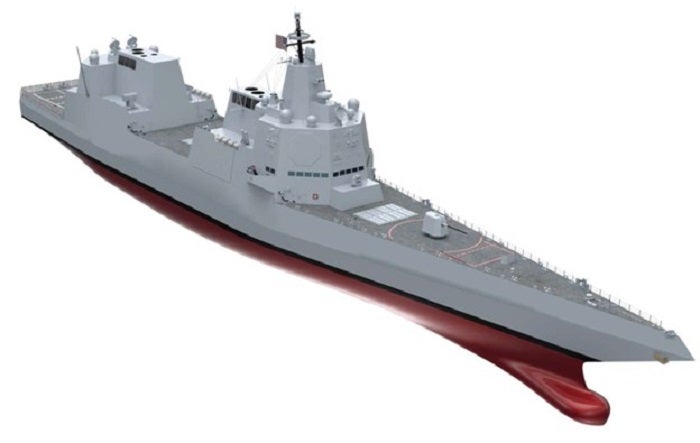
Gibbs and Cox, a US naval architecture firm and Leidos subsidiary, will continue their design and feasibility efforts for the US Navy’s future guided-missile destroyer, DDG(X).
The US Department of Defense (DoD) awarded the company another contract modification worth $36.7m on 16 February 2024. This comes a year after an earlier modification valued at $39.6m for the same services.
Work will be performed in Washington D.C. (60%); Arlington, Virginia (35%); Philadelphia, Pennsylvania (5%), and is expected to be completed by February 2025.
Fiscal 2023 and 2024 research, development, test and evaluation (Navy) funds in the amount of $7.2m will be obligated at time of award, and will not expire at the end of the current fiscal year (FY).
The Assistant Secretary of the Navy established the DDG(X) programme, designated PMS 460, back in 2021. These vessels will replace the Navy’s Ticonderoga (CG-47) class cruisers and older Arleigh Burke (DDG 51) class destroyers.
Now, the Navy hopes to procure the first DDG(X) in FY 2032, though the date for procuring the first ship has changed before – it was initially due for 2028 in 2021 – and could change again.
How well do you really know your competitors?
Access the most comprehensive Company Profiles on the market, powered by GlobalData. Save hours of research. Gain competitive edge.

Thank you!
Your download email will arrive shortly
Not ready to buy yet? Download a free sample
We are confident about the unique quality of our Company Profiles. However, we want you to make the most beneficial decision for your business, so we offer a free sample that you can download by submitting the below form
By GlobalDataThe Navy’s proposed FY 2024 budget requests $187.4m in research and development funding for the programme.
Design requirements
The Navy envisages the DDG(X) as having:
- Flight III (latest DDG 51 configuration) Aegis combat system elements.
- More growth margin than the Flight III DDG 51 design, meaning more space, weight-carrying capacity, electrical power and cooling capacity for accepting additional or higher-power equipment and weapons (including directed-energy weapons) over the ship’s service life.
- An integrated power system.
- Reduced vulnerability due to reduced infrared, acoustic, and underwater electromagnetic signatures.
The Navy states that the baseline design, like the Fight III DDG 51 design, is to include 96 standard Vertical Launch System (VLS) cells, with an ability to incorporate 12 large missile launch cells in place of 32 of the 96 standard VLS cells.
It is also to include two 21-cell Rolling Airframe Missile (RAM) launchers and an ability to be built with an additional mid-body hull section, called the Destroyer Payload Module, that would provide additional payload capacity.

Extending DDG(X) delivery to process existing programmes
In December 2023, the Congressional Research Service claimed that the “Procurement of DDG 51s… would end sometime after procurement of DDG(X)s begins.”
Notably, the DoD invested more than $9bn toward the Arleigh Burke sustainment last year: toward Flight III modernisation and the construction of nine new destroyers until 2026, This clearly denotes the Navy’s intention to continue employing its current destroyer fleet – originally acquired from 1985 onward – well into the near future.
This coincides with the DoD’s decision to extend its DDG(X) ship design phase for another year. This is a wise decision as the capacity of the US naval industrial base has been overwhelmed for some time.
Suppliers are pre-occupied with a number of ambitious programmes that are due to evolve the US Navy’s capabilities amid a shaky security situation over the next few decades. These include the Constellation frigates and Columbia nuclear-powered ballistic missile submarines, among many others.
This was a concern that the US Secretary of the Navy, Carlos del Toro, voiced in a speech recently, arguing that Navy industry suppliers are more fixated on their share buybacks and less on their critical naval infrastructure.







